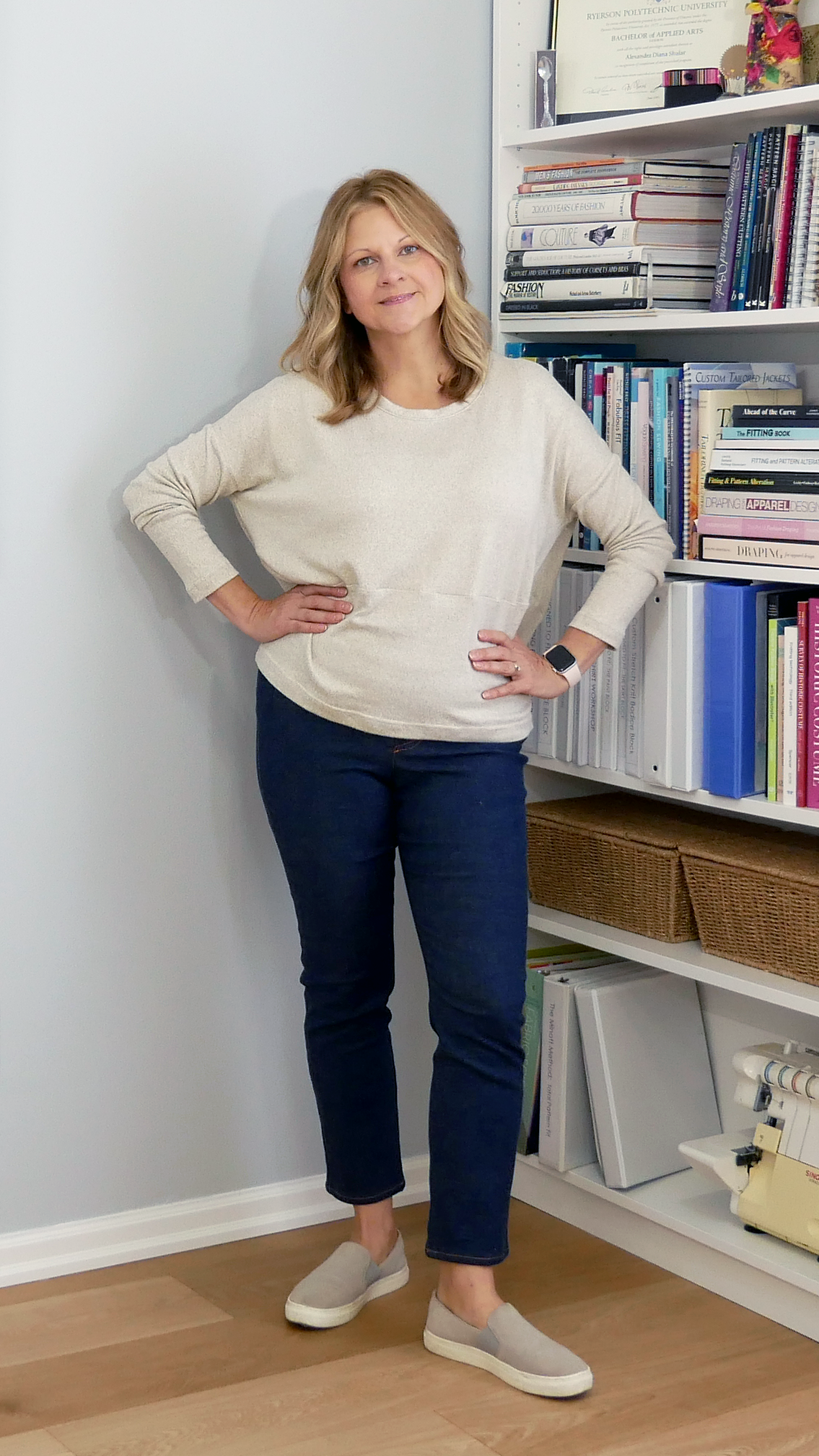Developing a Handmade Wardrobe: Part 3 The Sunny Knit Top
An oversized, comfy sweater is always the first thing I reach for on a chilly morning. The Sunny Knit Top by Style Arc is a pattern that I've had for quite a while. I put it on my Fall season wardrobe plan knowing that it was a little too oversized for my liking, so today I'll share how I changed the pattern into one I know I'll be using over and over again and give you two valuable knit pattern making tips that you've likely never seen before.
This week I'm continuing with the series on developing a handmade wardrobe. This is part 3 of the series and I'm featuring the Sunny Knit Top. If you've missed the previous videos, I promise they are very informative, so be sure to watch those next if you haven't already.

This sweater knit fabric from Fabricland is very stretchy with a stretch ratio of 100% but since this an oversized garment, this isn't the most important property. What is more important is to understand how the knit will "drop" when worn. Essentially this means that any garment made from this fabric will drape and become longer with the weight of the fabric.
To test how much knit fabric will drop, use pins to mark a 10" segment on the fabric's vertical grain while it is relaxed and lying flat on the table. Then allow the fabric to hang vertically. After a few minutes, measure the distance between the pins to understand how much length is gained. This will tell you how much shorter you need to make the garment in order to achieve your desired finished garment length.
My fabric has a drop of 1/8" for every 10" of fabric length, which is about a 1% increase. As a result I'll reduce the length of my pattern by 1% of my desired finished length so that my sweater doesn't end up being too long. For example if I want the finished length of my sweater to be 24 ½" when worn, I'll make my pattern length 24 ¼". While this is a very small amount in this fabric, in other fabrics with more drop, the impact would be greater so understanding this concept will allow you to alter the pattern before you sew.
If you'd like to learn more about fabric stretch ratio and stretch fabric reductions, I invite you to explore my Custom Stretch Knit drafting courses. The Custom Stretch Knit Bodice and Skirt courses will show you step by step how to draft your custom stretch knit blocks using your personal body measurements and the stretch ratio of your chosen fabric.
- You'll learn how to calculate measurement reductions for the perfect amount of negative ease.
- You'll get instruction on constructing your garments as well as assessing and solving the most common fitting issues.
- You'll also learn how to make your finalized stretch knit block into a master pattern for each fabric stretch ratio.
These classes are the perfect introduction to pattern development for knit fabrics. Get the details.
I've got a fairly unique way of determining the right length for the neck band, it's super easy and works for me every single time. Watch the video for all the details.
So tell me, did you learn something new by watching this video? If you're watching on YouTube, share your aha moment in the comments. If you know someone who might benefit from seeing this video, share the link and invite them to learn along with you.
If you're interested in following my progress as I work through the development phase of the rest of my handmade wardrobe, sign up for the Perfect Fit Guide to add your name to my email list, subscribe to my YouTube channel or follow me on instagram @inhousepatterns, to stay in the loop. I'll be sharing my progress as I work through more of the garments in my handmade wardrobe plan.
Don't forget to check out my Custom Stretch Knit pattern making courses for more detail on how to create stretch knit garments that fit. Thanks for watching, I'll chat with you soon, bye for now.
GET A COPY OF THE PERFECT FIT GUIDE
Discover the Six Essential Steps to Getting the Right Fit
We hate SPAM. You can unsubscribe at any time.

